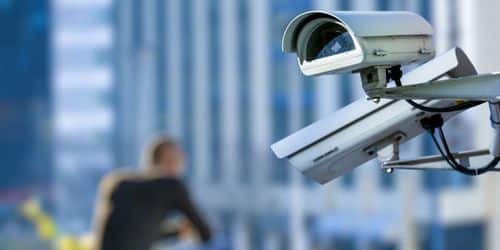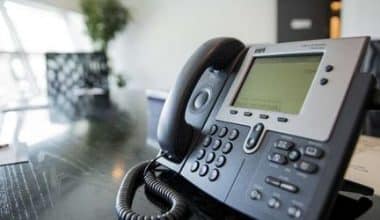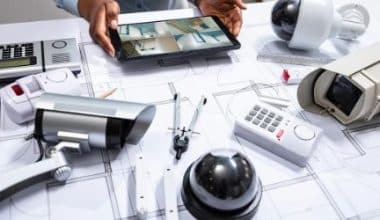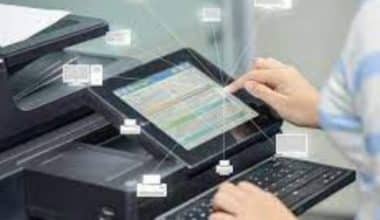Any tool, gadget, or device used to conduct various types of surveillance, counter-surveillance, and investigations is considered surveillance equipment. This article covers the fundamentals of covert, video, hidden, and audio surveillance equipment.
The equipment is most often used to perform surveillance. Surveillance entails observing the conduct of a certain person or persons from a safe distance. Spy equipment is also used for counter-surveillance to detect electronic bugging devices. Or to keep others from watching your actions. Or to carry out covert investigations. Private detectives, police officials, bounty hunters, and even the military use espionage equipment.
Detectives frequently employ spy equipment without knowing the subjects they are spying on. This is frequently done to collect information on a person’s activity, such as video, images, or data. Furthermore, surveillance equipment is becoming increasingly important for personal and home security. For example, people secure their homes using surveillance equipment such as security cameras, window monitors, hidden gadgets, and wireless cams.
Types of Surveillance Equipment
The following types of surveillance equipment comprise a great line of basic and advanced security and covert products. You do not need to be a private investigator or a police officer to obtain the equipment. Many people buy hidden cameras and other devices for their homes. Audio recorders, electronic bug detectors, digital cameras, GPS tracking devices, listening devices, night vision goggles, self-defense products, and other tools are available.
#1. Audio Listening and Recording Devices
Private Investigators, law enforcement, and intelligence experts employ covert audio listening, recording, and analysis equipment to collect conversations, sounds, and noises for use as evidence in investigations. Private investigators may utilize Audio Surveillance Equipment such as amplified microphones, electronic bugging devices, or even mobile phone spy software while they are watching from a distance.
#2. Binoculars, Scopes, and Optics
For private detectives and law enforcement personnel, binoculars are essential surveillance equipment. They mostly assist people in viewing objects from a distance, which may be required to perform a check on your subject or at a stakeout. Night Vision Goggles, Night Vision Binoculars, and weapons sights are useful for nighttime sleuthing and security.
#3. Computer Hardware and Software Tools
Specialized hardware and software programs are used by investigators, police, and intelligence specialists to spy on computers, record internet surfing and other computer activities, log keystrokes, and capture chat discussions and email exchanges. A private investigator, for example, might utilize keylogging software to catch a cheating spouse speaking online with his or her partner.
#4. Faraday Bags
Faraday bags are devices that prohibit signals from entering or exiting an electrical device. Private detectives, for example, may use the bags to prevent their clients’ mobile phones, tablets, or even credit cards from being tracked.
#5. GPS Tracking Devices
GPS Tracking Undercover Gadgets track the movement and travel activities of nearly anything, from automobiles to people to physical objects. Install GPS tracking devices covertly to follow the position everywhere it goes. Trackers then watch the motions with specialized software that uses GPS signals to pinpoint the exact location of the device.
#6. Headphones, Earbuds, and Headsets
Headphones are miniature loudspeakers that are worn near the ears and have a headphone connector or in-ear connectors. A signal source, such as an audio amplifier, radio, CD player, mobile device, or personal computer, is connected to the headphones.
Hidden safes (also known as hidden diversion safes) are simple and effective home security gadget that allows you to conceal valuables inside containers that resemble everyday household items such as soda cans, hair spray cans, soup cans, and more. These are excellent ways to keep your belongings secure, even from family members.
#8. Mobile Phone Tracking Software
If you’re a worried parent who wants to know what their child is doing on their phone or computer, you should think about employing mobile phone spy software. These allow you to track and monitor cell phone and tablet activity. You can monitor incoming and outgoing calls, SMS messages, social media activity, GPS location, and more. Because not all programs are compatible with all phones, it is important to learn which software is compatible with iPhones, Android phones, Windows phones, and so on.
#9. Police Equipment
Police and law enforcement officials employ a variety of surveillance and security equipment and tools in the course of their duties. They employ high-tech tools, including binoculars, night-vision goggles, infrared scanners, metal detectors, and insect scanners. They also use personal security equipment, such as tactical equipment. Examples include firearms, tasers, batons, pepper spray or mace, handcuffs, and more.
#10. Surveillance Equipment and Counter-Surveillance Equipment
Surveillance, counter-surveillance, and countermeasure inspections can be performed using a variety of devices. The devices are for your security or to provide security to your clients. Electronic bug detectors, for example, aid in the detection and location of all major electronic surveillance equipment. Locate bugs hidden in rooms, phones, furniture, microphones, video transmitters, and tape recorders.
One of the most common forms of public and non-public surveillance is the recording and capture of video footage. Everyone with a cell phone can record video. The footage may even be used as official evidence in a court of law.
To conduct surveillance or catch hidden video, investigators employ more modern and high-tech equipment. Packaged camera systems, CCTV, and DVR monitors are examples of such equipment.
Drones are used for airborne surveillance by police officers, investigators, and even the military. Drones assist law enforcement in searching for suspects, conducting surveillance, and monitoring disaster zones. Also, drones can take pictures and videos.
Additional types of surveillance equipment cameras include hidden cameras that are hidden and out of sight, wireless security cameras, stealth cams for headgear, covert spectacles, and hidden camera buttons.
Video Surveillance Equipment
All firms must prioritize security. After all, how can you be lucrative if you can’t protect your assets? With cameras that offer computer-like services like motion sensors, remote viewing, and mobile notifications, video surveillance equipment is more intelligent and effective than ever. With the press of a button, some devices can even instantly call police enforcement.
Technological advancement has also resulted in more efficient means of recording and storing data. Small business owners have access to extremely strong surveillance equipment at a comparatively low cost. If you’re looking for video surveillance equipment but don’t know where to start, keep reading for our video surveillance equipment buying guide.
Top video surveillance equipment providers
#1. Protection 1
Protection 1, which we scored as the best overall video surveillance system in our assessment, has a plethora of features that make it a versatile solution for any enterprise. The system provides professional monitoring from its agents 24 hours a day, seven days a week, while also allowing you to monitor the system yourself. It also offers a large range of storage devices for your system.
#2. ADT
ADT is still a superb monitoring solution for small businesses looking to beef up their security. It provides three types of cameras—wireless, indoor color, and dome—so that ADT devices can be installed in any type of business. The system also offers digital video recording, allowing multiple security agents to view the same feed from different locations.
#3. Blink
Amazon’s Blink is a low-cost security system with an easy-to-use interface for small businesses. Blink supports both local and cloud storage, and it interfaces with Amazon’s Alexa as well as other Amazon Web Services products and platforms.
#4. Tyco Integrated Security
Tyco Integrated Security offers small businesses a variety of customizable surveillance solutions, including closed-circuit systems, remote web management, and viewing and recording gear. It also provides a variety of camera alternatives for outfitting your spaces.
What to Consider Before Buying a Video Surveillance Equipment
When settling on a video surveillance system for your business, you need to examine numerous considerations.
#1. Installation
If your company is small and you don’t have many places to watch or several cameras to set up, you can install your surveillance system yourself. Bigger organizations with multiple sites and intricate configurations should hire an expert to set up the system.
#2. Pricing
Price is also determined by the size of your organization and the number of cameras required, as well as the type of storage desired, the length of time video to be stored, and the features desired, such as video analytics or motion detection. In general, video surveillance systems start at about $50 per month for modest one- or two-camera systems, but advanced systems with several cameras can cost up to $5,000.
#3. Camera type
There are two types of cameras used in video surveillance systems: IP cameras and analog cameras. Conventional analog cameras are being phased out in favor of IP cameras, which have greater features and capabilities. IP cameras are networked devices that collect images at a higher resolution and enable automatic warnings, video analytics, and other advanced functionalities.
#4. Storage type
NVR, DVR, and hybrid video data storage options are available for your video surveillance system. DVR, or “digital video recorder,” uses analog cameras. IP cameras are utilized with an NVR, which stands for “network video recorder.” Analog and IP cameras can be combined in hybrid systems.
#5. Storage capacity
Your surveillance system’s storage requirements are determined by the quality and length of your video recordings. If you intend to record and archive high-quality film, your system will require a lot of storage space. You must also decide whether you will save the footage locally on the camera’s internal storage drive, on a hard disk, or externally on a cloud-based platform.
#6. Customization
Most vendors provide you with a great degree of customization, which means you can readily modify a system to your company’s needs. There is a solution for everyone, whether you require a large system to cover numerous locations or a few cameras to monitor your storefront.
#7. Features
Night vision, sophisticated motion detection, and pan/tilt/zoom (PTZ) are just a few of the features offered for video surveillance systems. Determine the features your company requires and then choose your cameras and surveillance system accordingly. For example, if you require a system primarily to watch your business at night, select one with great night vision and 24/7 alerts.
#8. Business areas that require protection
Choose where you want to position your surveillance cameras because this will define the type(s) of cameras you require. For example, if you need to monitor your back entrance, you’ll want a weatherproof exterior camera with PTZ functionality and motion alerts.
Surveillance Equipment Audio
The use of electronic devices for remotely listening in on and recording conversations is referred to as audio surveillance equipment. There are many different types of audio surveillance equipment, and each one has pros and cons of its own. Law enforcement and spy agencies commonly use surveillance technology and solutions, such as wearing body wires, bugging rooms, or wiretapping phones, to gather hidden information.
wiretapping is often the preferred method of audio monitoring because of its simplicity and ease of implementation. The most difficult obstacle is gaining physical access to the target phone to wiretap it. But once you get through it, it’s a breeze. The mechanism is simple: tiny and unobtrusive devices known as bugs are planted within the phone, allowing you to monitor and record both persons involved in a conversation, with the signal being wirelessly transmitted from the transmitter to a receiver.
Another effective and extensively used audio monitoring method is body wires. A small microphone and transmitting/recording device are hidden beneath an individual’s clothes to gather a range of information by asking questions of a party or witness. One obvious disadvantage of such an approach is that it necessitates being physically there in the presence of the subject to be recorded.
Another covert audio surveillance technique is the use of microphones. Depending on the situation, a room or long-distance microphone may be used. The former, as the name implies, must be planted inside a room, usually disguised as a common object, to pick up and record conversations. The latter, sometimes known as a “shotgun mic,” can take up noises from a distance.
Hidden cameras can be a surprisingly helpful tool for home security, in addition to bringing suspense and drama to your favorite thriller films and TV shows. Because the cameras are small and disguised, they are easier to conceal from savvy robbers who are aware of your other security cameras.
Due to their occasionally dubious associations, hidden cameras aren’t our first or even second option for surveillance equipment. Yet, they might be a suitable alternative in situations when a standard security camera is too large or at a location where robbers might smash it. Consider these examples of hidden surveillance equipment.
- Vidcastive
- Waymoon
- Ehomful
- Alpha Tech
- Iseason
- SummitLink
- Holaca
What are the 5 types of surveillance?
- Electronic Monitoring.
- Fixed Surveillance.
- Stationary Technical Surveillance.
- Three-Person Surveillance.
- Undercover Operations
What devices are best used for surveillance?
The 2023 Best Home Security Cameras
- SimpliCam
- Lorex
- Ring
- ADT
- Wyze Cam
- Arlo
- Nest
What are the 2 main types of surveillance?
The two main types of surveillance are: Event-based surveillance and indicator-based surveillance
What are the three basic surveillance methods?
Direct, preconstructive, and reconstructive surveillance are the three forms.
What are the four elements of surveillance?
Each of these areas contributes to the four fundamental components of surveillance: (1) collection, (2) analysis, (3) dissemination, and (4) response.
What are the basic components of surveillance?
The four main components of surveillance are collection, analysis, distribution, and response.
Related Articles
- VIDEO SURVEILLANCE: Meaning, Software & All You Need
- SECURITY CAMERAS FOR BUSINESS: Best Security Cameras and Its Cost
- OFFICE SECURITY SYSTEMS: Definition, Uses, and Best Security Systems
- 11 Best Business CCTV Systems In 2023 (+ Reviews)
- Best Business Security Systems for Small Businesses






